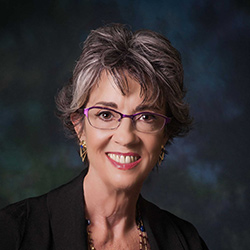A recent invitation to explore new team-based service-delivery models “had me at ‘hello,'” writes Robyn Stone. Here’s why.
You had me at “hello.”
That famous line from the 1996 film Jerry Maguire came to mind earlier this summer when I received an invitation to an end-of-July meeting “to discuss ways to better care for frail elders.”
The meeting was designed to shine a spotlight on emerging care delivery models that use inter-professional teams of physicians, nurses and social workers to provide integrated care to frail older adults. It was funded through a grant to the Mongan Institute Health Policy Center at Massachusetts General Hospital and Montana State University (MSU) in Bozeman by The Gordon and Betty Moore Foundation.
I’ve always been a fan of team-based care. But that’s not what sold me on the Bozeman meeting.
Within minutes of opening my invitation, I learned 2 things that made this a meeting I could not miss:
- The agenda began and ended with a singular focus on workforce. We weren’t scheduled to talk about team-based care until day 2.
- Half of the 30 invitees included people, like me, who have spent their careers exploring ways to strengthen the health care workforce. This was highly unusual. Workforce stakeholders aren’t often in the room when new care models are on the table.
Obviously, meeting organizers Karen Donelan of Mass General and Harvard Medical School, and Peter Buerhaus of MSU, understood a basic truth that I’ve been trying to advance for many years:
You can spend all the time in the world developing innovative models to integrate and coordinate the delivery of services and supports for frail older adults.
But if you don’t have a trained workforce to implement those models, you’re not likely to see much lasting success.
Like I said, they had me at “hello.”
TRAINING WORKERS TO BE TEAM PLAYERS
I can’t say that my colleagues in Bozeman solved the workforce challenges associated with new care delivery models—or that we talked enough about the role of direct care workers in team-based care. But, in my opinion, we made some important progress.
A formal report about the Bozeman meeting is in the works. For now, here’s my personal take on some of the important workforce issues we discussed.
First, we agreed that team-based care is our best hope for ensuring that the complex needs of frail older adults are addressed in a holistic, person-centered and cost-effective way.
Second, we started a good list of competencies that physicians, nurses and social workers will need to successfully fill the new roles we’re envisioning for them.
- A solid background in geriatrics: We can’t expect anyone to deliver high quality, integrated care to frail older populations unless we give them a solid background in geriatrics. This seems self-evident, I know. But it’s simply not happening. We need to work a lot harder to ensure that our caregivers understand the health and social issues affecting the people they work with every day.
- Strong communication skills: When team members from different disciplines come together to provide services and supports to an older person, they need to know how to talk with one another and to the care recipient. Again, this is self-evident. But we’re not currently doing enough to teach students how to share information with older adults and with people outside their disciplines. This kind of communication, so important in team-based care, doesn’t happen by itself.
- The ability to collaborate: Some physicians, nurses and social workers in more traditional care settings have gotten used to flying solo as they deliver services and supports to older adults. But that’s changing rapidly, and for good reason. Team members now need special skills that allow them to work in collaboration with other caregivers, and with the care recipient, as they assess needs, develop care plans and solve problems.
- Firsthand experience: The fundamentals of team-based care can and should be taught in the classroom, as part of a standardized training curriculum. But these lessons also must be learned firsthand through strong clinical placements that occur early in the training process. And let’s not forget about the physicians, social workers and nurses who are already working in our rapidly changing care settings. They need ongoing support, guidance and education so they can adjust to, and thrive in, our new team-based culture.
WHAT LEADINGAGE MEMBERS CAN DO
I’m happy to have been included in the Bozeman discussions about workforce issues associated with team-based care. I’m hoping those discussions will help jumpstart a broader conversation within the field of aging services.
You can help.
Make sure one important word is part of the discussion whenever you find yourself talking with policy makers, researchers, educators or colleagues about team-based care or any other strategy to redesign our care delivery system.
That word is workforce.
Hopefully, you’ll have them at “hello.”

Robyn I. Stone, DrPH, is senior vice president of research at LeadingAge, and co-director of the LeadingAge LTSS Center @UMass Boston. Her widely published work addresses long-term care policy and quality, chronic care for people with disabilities, the aging services workforce, affordable senior housing, and family caregiving.
